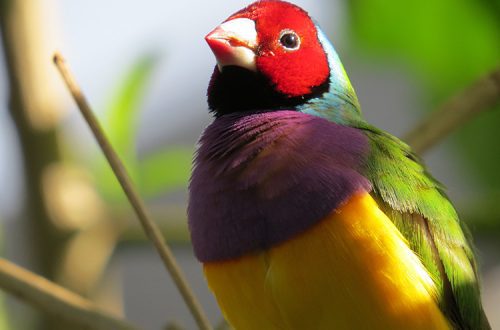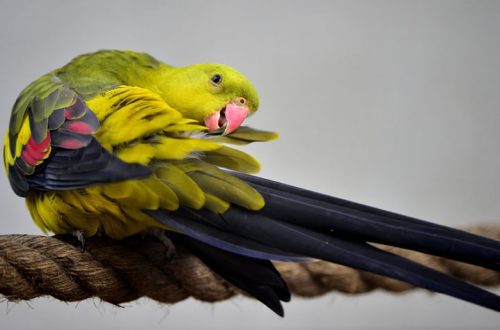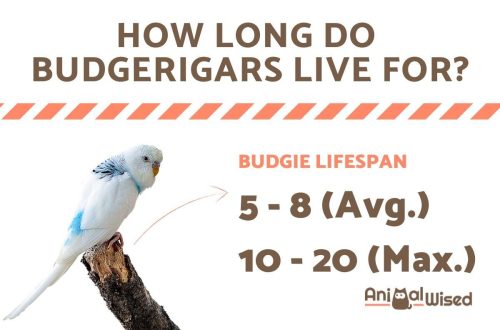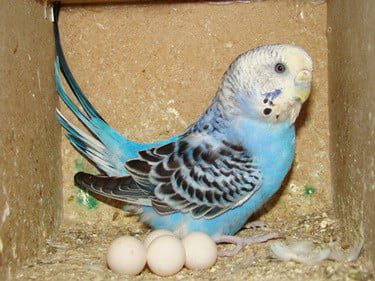
The female budgerigar laid an egg
Sometimes, an egg at the bottom of a cage comes as a complete surprise. Especially when the owner did not suspect that he had a female. Then he has a desire to acquire small parrots and begins the search for information on what to do with the egg and how to continue laying.
To begin with, answer yourself the question: how old is your female? Are you sure about her health? Does she live with a male or alone? What is her behaviour?

Budgerigars reach maturity at 3-4 months, but the optimal breeding age is 1,5 to 5 years. Laying at a very early age is dangerous to the health of birds.
How long does a female budgerigar incubate an egg?
The female begins to rush in a day. Eggs, budgerigars, incubate for 18-19 days. After that, a day later, chicks begin to appear.

How to stop/prevent laying – remove the first egg, gradually reduce daylight hours to 7 hours, remove the house and all the items that she can use to equip the nest, exclude soft, vitamin-rich food: egg, cottage cheese, sprouted grain (it is enough to give 1 time per month), increase the amount of greenery, and reduce the grain mixture, if possible, lower the temperature in the room, move the cage or transplant the male (extreme option) – this will be a stressful situation for the parrots.
If, despite your methods to stop the laying, the female lays a second egg: you can let her reach, sit in the nest for 18 days and calm down. If the female is in a pair, you can pre-scald the eggs, if one is not necessary. Otherwise, she may periodically lay eggs, losing the ability to care for and feed offspring. The body will be depleted, and you will fall into a vicious circle, dangling between normal feeding and support during reproduction.
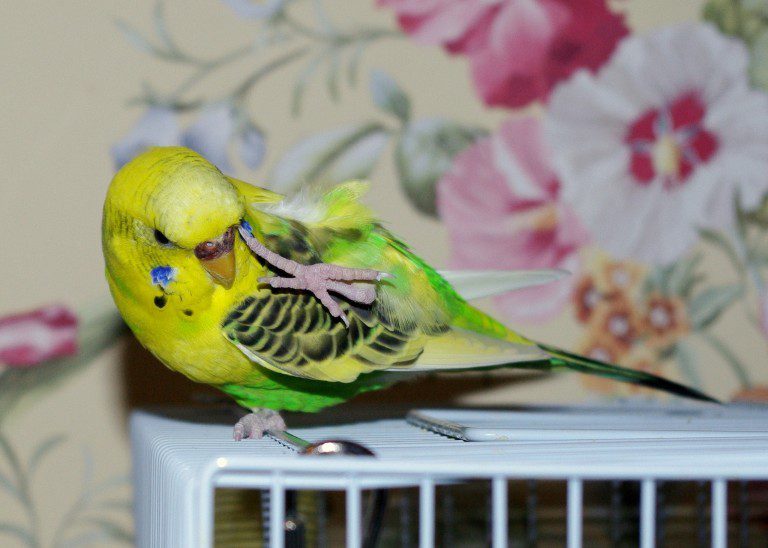
What to do, if:
– the female laid an egg at the bottom of the cage (lives alone). In this case, she laid an empty egg (there is no embryo) – do not remove the egg, let her sit on it. Do not put a nest: it can become an additional incentive. Apply all means to prevent masonry;
– lives with a male: in such a situation there is a possibility of a fertilized egg – if you want offspring, study the “Reproduction” section or start preventing further laying;
– during the breeding season, the female laid the egg in the corner of the cage, and not in the nest. During the first laying, this often happens, the bird simply did not have time to “run” to the nest. If the laying continues at the bottom: most likely she did not like the house for some reason, she does not consider it safe and suitable. Try to change the nest and position it differently if possible. For successful laying, budgerigar eggs must be in the nest and not at the bottom of the cage;
– if you are preparing for the offspring of budgerigars, and the female did not sit down after the first egg – do not worry, female budgerigars most often sit tightly on the clutch after 2, and sometimes after 3 laid eggs;
– the male destroyed the clutch in the nest. Most likely, your couple is of the same sex, respectively, the eggs laid by the first female are not fertilized, and the second is trying to win back the territory with her behavior. If you are sure that this is still a male, then it is likely that, according to the male, the nest and perhaps even the cage are in danger. In this way, the budgerigar protects the female. You need to either change the nest, the location of the cage or transplant the male;
– the female has an egg stuck: brew a pharmacy chamomile and give the bird a drink, you can pour the solution into a drinker, draw some vaseline oil, vegetable or fish oil into a syringe (without a needle) and drop 1 ml into the corner of the beak, also drip the cloaca with oil or vitamin A and massage gently. Install warm steam under the cage, and cover the cage itself with a thick cloth. You need to watch the breath of the bird.
If you see that the female is very tired, you need to stimulate the contraction of the muscles of the oviduct: gently massage her back in the lumbar region and the place at the base of the wings. After washing the abdomen with warm water, massage it too, trying to bring the egg out – this must be done very carefully, without crushing the egg! After that, the female is placed in a warm cage with soft bedding. After 3-4 hours, the female should lay an egg.
If blood appears or the cloaca falls out, you need to urgently contact an ornithologist and a surgeon! Only a qualified doctor can cope with such complications.
In such situations, the percentage of death of females is very high, therefore, if you are not an expert, contact an ornithologist at the first sign of a bird being unwell.
Why can’t a female lay an egg?
There are several reasons for such cases: poor nutrition, impaired contractions of the muscles of the oviduct (this problem occurs more often in too young females if they are less than a year old), limited movement of the bird, which leads to poor muscle function, poor hygiene (dirt got into the cloaca, which caused inflammation), an egg that is too large or has a rough shell, the position of the egg is wrong. Also, a lack of calcium leads to the fact that the egg cannot fully form, the shell is missing. Due to the soft shell, the egg cannot pass through the oviduct.
Signs: the female lies at the bottom of the cage and pushes. The bird becomes lethargic, with a high temperature, does not respond to external stimuli, puffs up and closes its eyes.
Why did they peck the egg? lack of complementary foods before breeding, parrots lack the vitamins contained in the egg and calcium, which is part of the shell.
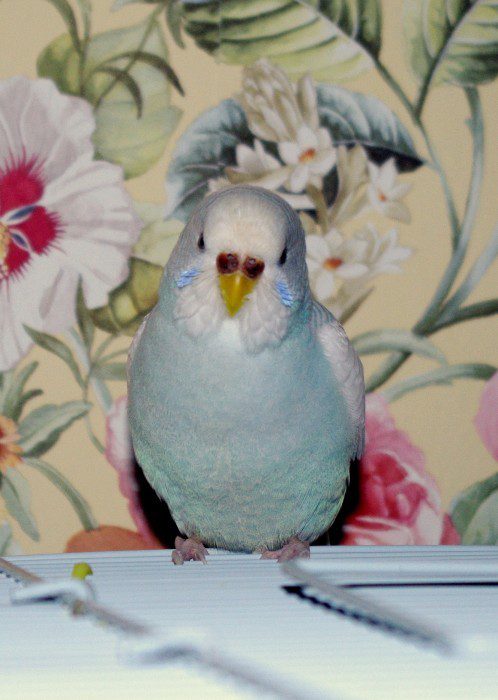
Laying eggs for female budgerigars requires a lot of energy and strength. Therefore, it is important to prepare the bird for it. This will help to avoid health problems in the parrot and its offspring.



